Summary of Climate Disasters on the Planet, October 16-22, 2024
Italy
Starting from October 16, Italy faced unprecedented downpours and devastating floods.
In Tuscany region, 100 mm (3.9 inches) of rain fell within just one hour. These extreme conditions caused the death of one person swept away by the floodwater.
The city of Siena was particularly affected, with floodwaters inundating the railway station and turning underpasses into raging rivers. The floods damaged homes and businesses, and blocked numerous vehicles.
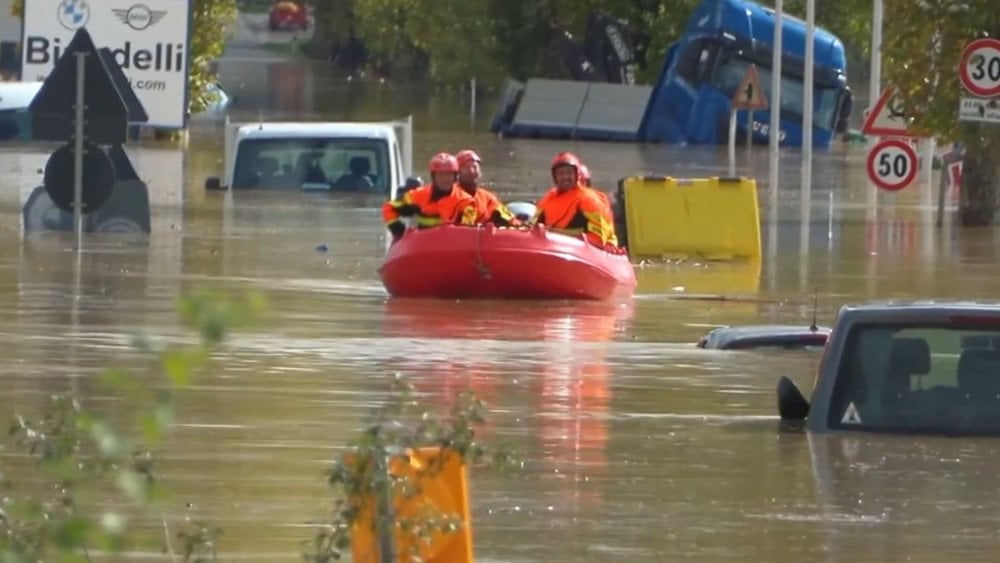
Heavy rains turned the streets of Siena into rivers, Italy
In Liguria region, a red alert was issued for the Entella and Magra rivers.
Floodwaters and fallen trees blocked the roads.
On October 18, near Sorrento in Campania, water brought mud, debris and volcanic pumice from the mountains and blocked the national highway 163 in Amalfi.
The next day, on the island of Stromboli in Sicily, downpours caused a lahar that struck the village of Ginostra. Massive boulders severely damaged houses, leaving local residents without electricity.
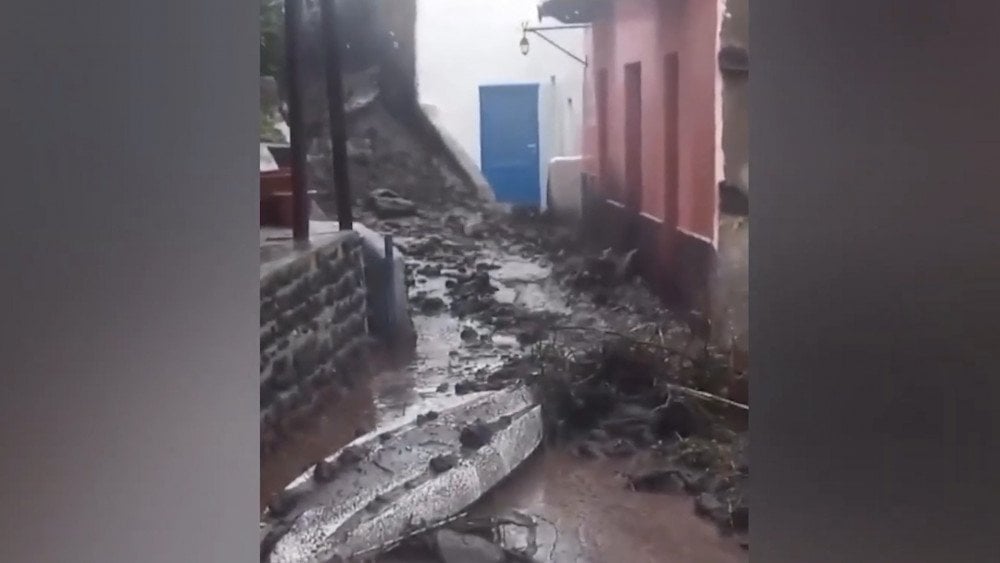
Lahar striking the village of Ginostra on Stromboli Island, Italy
On October 19, in the commune of Botteghino di Zocca, Bologna Province, floodwater rose to the second floors of buildings, leaving some areas entirely devastated. In the city of Pianoro, a car carrying two brothers was swept away by a powerful torrent. Tragically, one of the brothers did not survive. None of the current residents remembers such a destructive flood in Bologna Province.
In the capital city of Bologna, most rivers and canals overflowed, flooding large parts of the city. On the night of October 19-20, more than 150 mm (5.9 inches) of rain fell within just 6 hours, nearly doubling the average monthly rainfall (average October rainfall is 82.7 mm, or 3.3 inches).
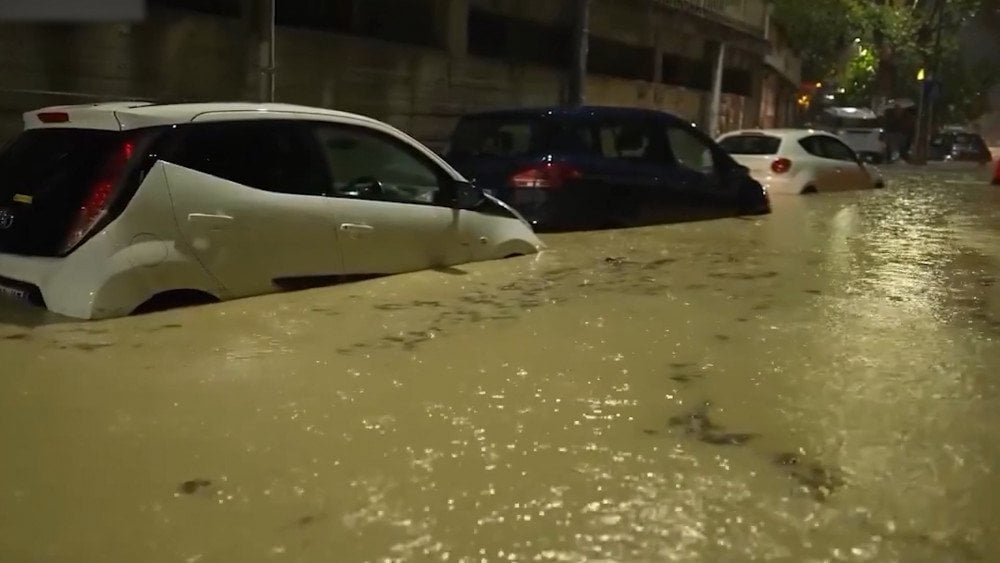
Flooded streets in Bologna, Italy
Residents of the region had not yet forgotten the destructive flood of May 2023, but this time, the disaster scale far exceeded previous ones. In Catanzaro Province in Calabria, several landslides were reported, and numerous roads were flooded. On October 21, in Lamezia Terme, heavy rain caused a sudden sinkhole several meters wide on the national highway 280, which quickly got filled with water and mud. A car with people inside fell into the hole, but fortunately, all of them were rescued.

A car fell into a sinkhole on the national highway 280 in Lamezia Terme, Italy
France
“Devastation,” “lives ruined,” “extreme flooding” — these are the terms mass media used to describe the horrifying scale of the climate disaster that struck France starting from October 16.

Shocking flood in France
At the ski resort La Croix de Bauzon, a shocking 866 mm (34.1 inches) of rain fell within three days, with 73% of it (631 mm, or 24.8 inches) falling within 24 hours.
In the town of Annonay, some houses were flooded up to the ceilings. In the commune of Limone, residents were shocked by the flood speed. According to witnesses, there was nothing at 9 a.m., but after an hour, everything was flooded, with water rising to 2 meters (6.6 feet).
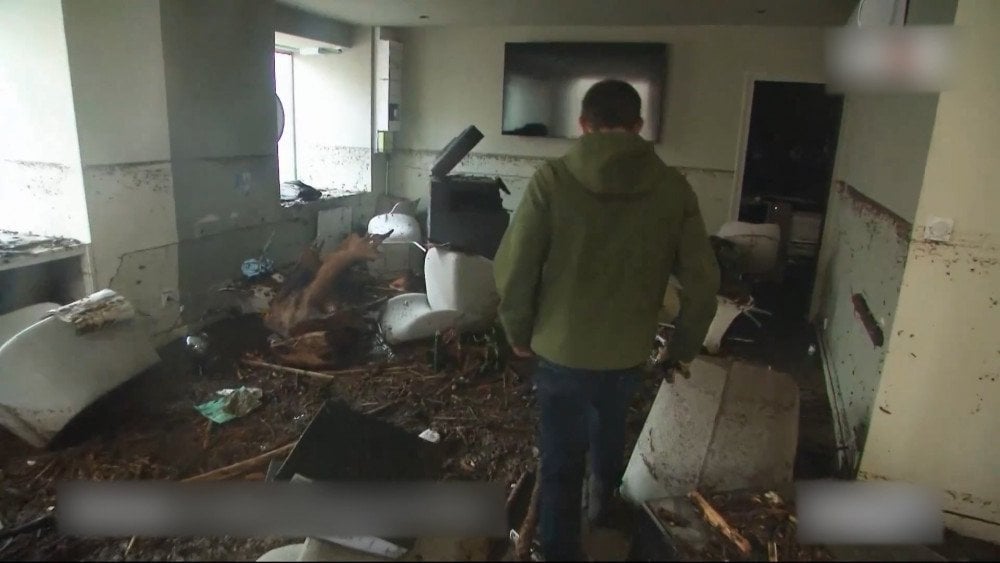
A house ruined by the flood, France
On October 17, the highest red alert was declared in six departments for the first time in the region's history.
All rivers in the affected areas overflowed.
Rescue operations involved about 3,000 firefighters and six civil defense helicopters. More than 900 people were evacuated, while 25 were in such perilous situations that they could only be reached by air.
The floods triggered landslides and closing of roads. The railway between Lyon and Saint-Étienne was blocked, with train services canceled for several days.
Storm Ashley
What began as a cloud formation in the Atlantic on October 18 rapidly developed into Storm Ashley in just one day. During that time, atmospheric pressure dropped by more than 24 mbar, forming a storm system. Meteorologists refer to this process as a “weather bomb.” On October 20, Ashley struck Ireland and the United Kingdom. In Northern Ireland, weather conditions resulted in cancellation of sports events, including the final football match in Armagh. In Aberdaron, Wales, wind gusts reached 132 km/h (82 mph).
In Ireland, the storm also brought strong winds and high tides, disrupting ferry and railway services.
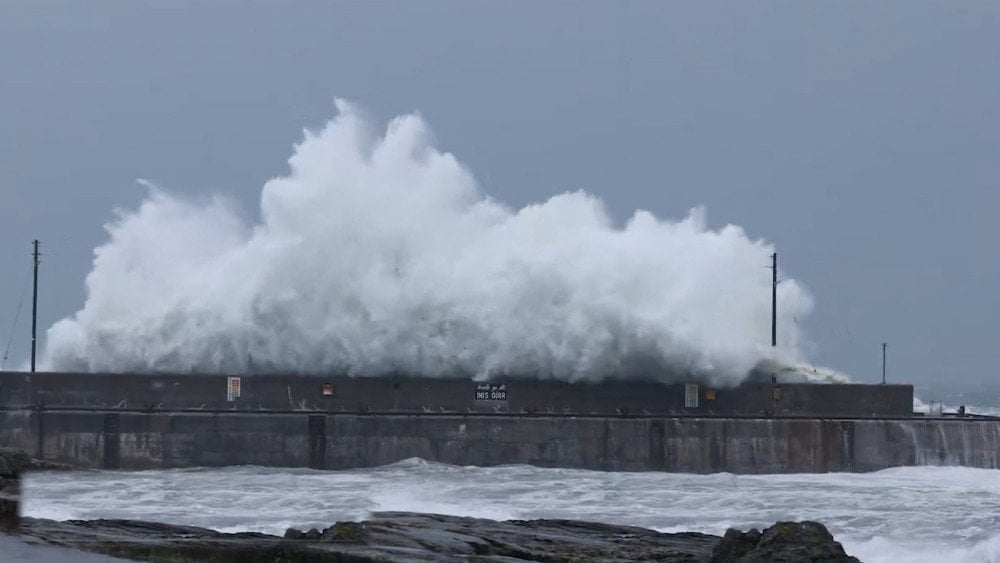
Mighty storm Ashley hits the Irish coast
At Dublin Airport, 81 flights were canceled, and 34 were redirected to other airports. At Kerry Airport, strong winds prevented people from disembarking after landing. Passengers had to wait out the peak of the storm on board for more than 4 hours. According to ESB Networks, on October 20, 53,000 people were left without electricity across Ireland.
Türkiye
On October 16, at 10:46 a.m. local time, a 5.9-magnitude earthquake struck the Kale area in Malatya Province. According to the Turkish Disaster and Emergency Management Authority (AFAD), the earthquake epicenter was at a depth of 9 km (5.6 miles). It is noteworthy that the European-Mediterranean Seismological Centre (EMSC) reported the earthquake’s magnitude as 6.1.

People rushing outside during the earthquake, Türkiye
Shocks were felt in six provinces: Elazığ, Şanlıurfa, Diyarbakır, Adıyaman, Erzincan, Kahramanmaraş, and even in neighboring Syria.
The epicenter was close to where two deadly earthquakes struck on February 6, 2023: a 7.8-magnitude earthquake in Gaziantep Province and a 7.5-magnitude one in Kahramanmaraş Province, where over 50,000 people died in Türkiye alone, according to official data.
Unsurprisingly, people were deeply frightened when buildings started shaking. Dozens were injured as they leapt out of windows in panic. Many residents fled buildings and remained outside for hours, fearing aftershocks. In total, 249 people were injured, including 43 hospitalized.
In Elazığ Province, more than 500 buildings were damaged, with 20 nearly ruined. As a safety measure, schools and other educational institutions were temporarily closed in affected areas.
Following the Malatya earthquake, about 200 aftershocks were recorded within a day, the strongest measuring 3.3.
On the following day, October 17, Sivas Province was struck by four consecutive earthquakes within just 10 minutes. According to AFAD, the most powerful tremor occurred at 11:29 a.m. local time, measuring 4.7. Then three more followed, ranging from 3.1 to 4.1 in magnitude. Fortunately, there were no fatalities.
China
On October 18, at 7:45 a.m. local time, a sudden landslide occurred in the village of Dangba in the Ngawa Tibetan and Qiang Autonomous Prefecture, Sichuan Province, and destroyed buildings of the village committee and the local marketplace.
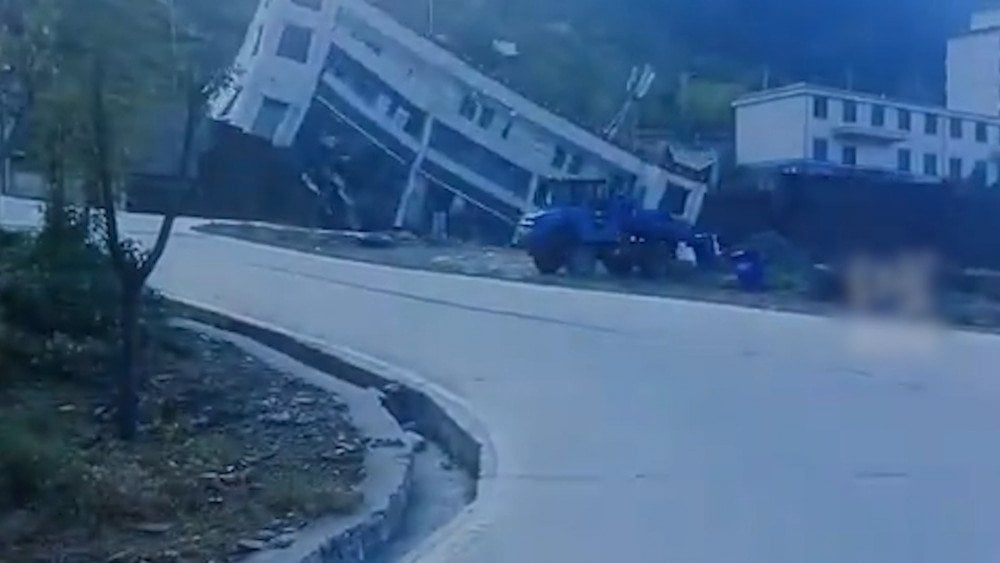
Sudden landslide destroying a building in Dangba Village, Ngawa Tibetan and Qiang Autonomous Prefecture, Sichuan Province, China
By preliminary estimates, the landslide volume was about 280,000 cubic meters (9.9 million cubic feet), and it damaged over 8 hectares (19.8 acres) of crops. Luckily, there were no fatalities since 152 people had been evacuated in advance.
Argentina
On October 16, the weather caused chaos in the provinces of San Luis, La Pampa, Buenos Aires, Chubut, Río Negro, and Mendoza.

Chaos in Argentina: hail, extreme rain, and a powerful storm
La Pampa Province, where residents captured a tornado near the village of Puelén, was hit the hardest. In the towns of Naicó and Santa Rosa, downpours and large hailstones caused significant damage.
Georgia
Heavy rain, wind and snow inflicted severe damage on the regions of Samegrelo-Upper Svaneti, Adjara, and Guria in western Georgia.
In the port city of Poti, around 300 families were affected, with some forced to leave their homes. The storm damaged power lines, flooded yards, and inundated the first floors of buildings.
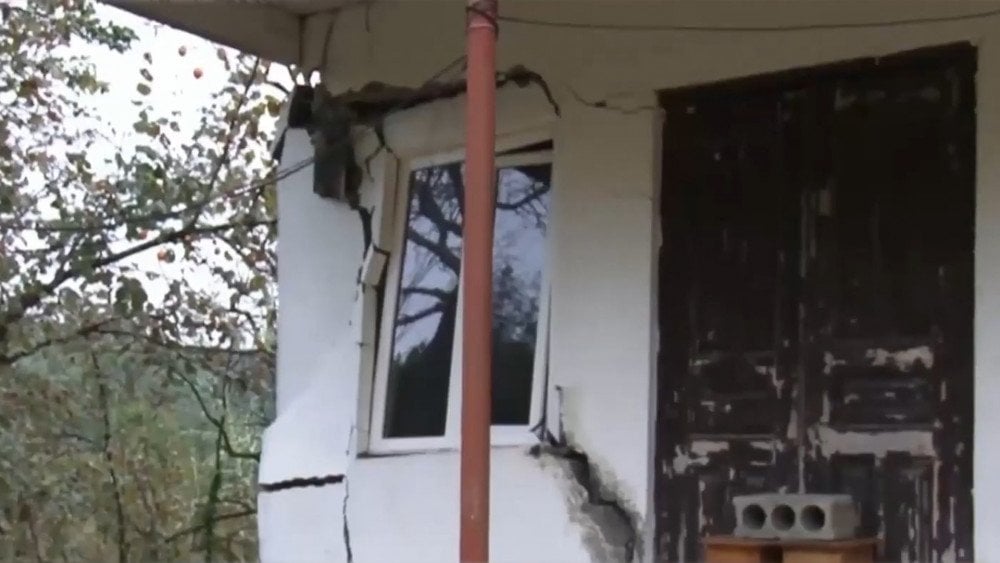
A storm-damaged house in Georgia
On October 19, a tornado damaged the roofs of 30 buildings. Moreover, a category-6 storm destroyed parts of the coastline.
In the town of Chkhorotsku in the Samegrelo-Upper Svaneti region, roads were washed away, and bridges were damaged. In the municipalities of Khulo and Shuakhevi in Adjara, the snow cover reached 20 cm (7.9 inches) in height. In the village of Chochkhati, Lanchkhuti Municipality, Guria Region, landslides aggravated and forced the evacuation of several families.
Tropical Hurricane Oscar
On October 19, category-1 hurricane Oscar struck the island of Great Inagua in the Bahamas, and the next day, it hit eastern Cuba. Oscar brought up to 380 mm (15 inches) of rainfall and winds of 120 km/h (74.5 mph). At least six people died in Guantánamo Province.
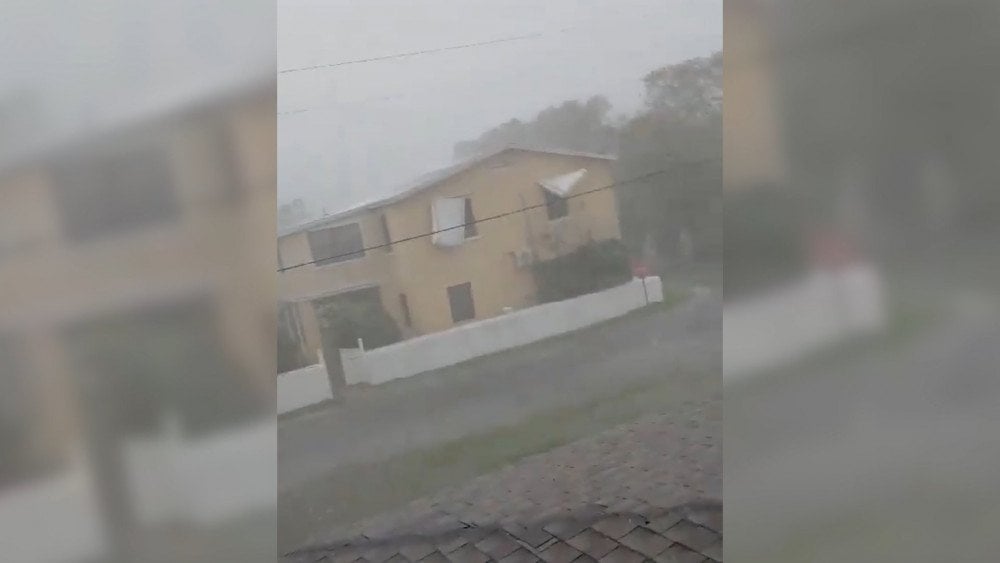
Hurricane Oscar rages in Cuba
Notably, none of the forecast models predicted Oscar would intensify into a hurricane, catching many people by surprise.
At first glance, Oscar may not seem catastrophic. However, specialists noted its unique characteristic: it became the smallest recorded hurricane with a hurricane-force wind field just 9.5 km (5.9 miles) in diameter, while typically this parameter ranges from 40 to 240 km (24.9 to 149 miles). So far, official science provides no explanation for this anomaly. Perhaps, it’s only the initial sign of a new phenomenon which scientists discussed a year ago at the conference “Global Crisis. America at the Crossroads 2024.”
USA
Record-breaking rainfall began on October 19 and resulted in catastrophic flooding in Roswell, New Mexico. Due to an extreme overflow of the Spring River, the city center and surrounding areas were inundated. Over 147 mm (5.8 inches) of rain fell within 24 hours, which is nearly four times the average October total (average October rainfall is 38.2 mm, or 1.5 inches). This rainfall broke the all-time record since data collection began in 1901.
The situation worsened dramatically overnight as water levels rose, flooding homes, shops, and streets. Rescue units urgently evacuated about 300 people, 38 of whom were hospitalized. Some locals had to wait for assistance on the roofs of their cars that were nearly submerged underwater.

People waiting for rescuers on the roofs of their nearly submerged vehicles, USA
Roswell became completely isolated: roads in and out of the city were flooded, and the local airport temporarily canceled all flights. Despite the rescue efforts, two people died.
Escalation of climate disasters is becoming increasingly obvious, yet many people continue to treat this fact with disbelief or even apathy. Why?
The answer is in how our opinions are manipulated.
When confronted with information about a natural cataclysm or even witnessing one, you seem to understand that something alarming is happening with the climate. However, tricks by authoritative media and experts often urge you to perceive it as something routine. Data is frequently presented to us in ways that downplay the threat. For example, instead of the usual millimeters, rainfall is now more often reported in centimeters, which visually minimizes the disaster scale tenfold.
In addition, following an event description, articles often contain a note stating that similar events have happened before. This reduces the perceived danger and diminishes the value of reported information, as we tend to remember the beginning and the end of a text more. The severity of disaster consequences is then attributed to management negligence and infrastructure deficiencies.
However, shaping public opinion on climate is just the tip of an iceberg. Behind it, there are far more profound manipulations that completely distort our perception of the world. Those who orchestrate wars, major terrorist acts, school shootings, and the revival of Nazism manipulate the minds of mentally sound people like puppets, creating global tragedies with our own hands.
The Impact documentary sheds light on all of these criminal schemes and their masterminds. By watching this investigative film, you will see the world as it really is and dispel any illusions. The truth is shocking, but it will help you understand the cause-and-effect relations between global events and give you insight into what will happen in the near future.
Watch the video version of this article here.
Leave a comment